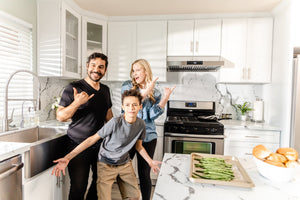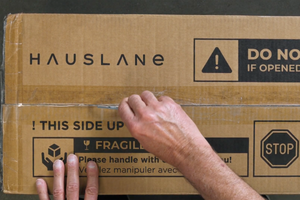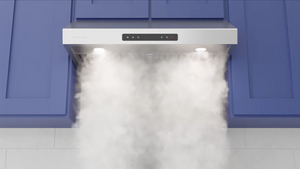How to Evaluate Range Hood Quality: Stainless Steel, CFM Power & More
A quality range hood is more than just its appearance; it encompasses material, performance, user-friendliness, and safety. It's essential to understand what sets apart a top-quality range hood from an average one. A range hood's primary purpose is to remove airborne grease, combustion products, smoke, and odors from the air during cooking. However, the efficacy, longevity, and safety of a range hood are determined by various factors.

The Significance of Stainless Steel Type in Range Hoods

Not all stainless steel is created equal; knowing the type used in a range hood can speak volumes about its quality.
Stainless steel is a popular material for range hoods due to its durability, resistance to rust, and sleek appearance. However, the type of stainless steel matters. Look for range hoods made with high-quality stainless steel, like 304-grade, which is renowned for its corrosion resistance. Another sign of a quality range hood is the absence of sharp edges, ensuring safety during cleaning or maintenance.
CFM Power: The Heartbeat of Range Hood Performance

The CFM rating determines how much air the range hood can move, directly impacting its efficiency.
CFM, or cubic feet per minute, refers to the amount of air a range hood can remove per minute. A higher CFM generally translates to more powerful exhaust capabilities, essential for those who frequently cook or have larger cooktop areas. It's crucial to choose a range hood with a CFM rating suitable for your kitchen's size and cooking needs.
Exploring Button Controls and Modern Technology

Modern range hoods come equipped with innovative controls and technology, enhancing user experience and efficiency.
Gone are the days of fumbling with clunky knobs. Top-quality range hoods now feature intuitive button controls, touchscreen panels, or even smart integrations. These technologies not only make the operation more effortless but can also provide enhanced features such as automatic shutoff, variable fan speeds, and filter maintenance reminders. When inspecting for quality, consider the intuitiveness, responsiveness, and added features of the range hood's controls.
Avoiding the Hidden Dangers: Sharp Edges on Stainless Steel

While stainless steel is a preferred material, sharp edges can pose risks—here's how to ensure safety.
An often-overlooked aspect when evaluating range hoods is the finish on stainless steel edges. Poorly constructed range hoods may have sharp, unfinished edges, which can lead to accidental cuts during cleaning or routine checks. When inspecting a range hood, run your hand (carefully) along the edges or wear gloves. Quality hoods will have smooth, rounded, and polished edges, indicating attention to detail and an emphasis on user safety.
Knowledge is power when choosing the perfect range hood for your kitchen.
By understanding the pivotal aspects that determine the quality of range hoods, you can make informed decisions that prioritize performance, safety, and aesthetics. Remember to consider the stainless steel type, evaluate the CFM power based on your kitchen's demands, appreciate modern controls, and never overlook the finer details like edge finishing.
At Hauslane, we’re ready to help you equip your kitchen with a range hood that truly resonates with top quality. Find out what makes our range hood line different from the rest.








